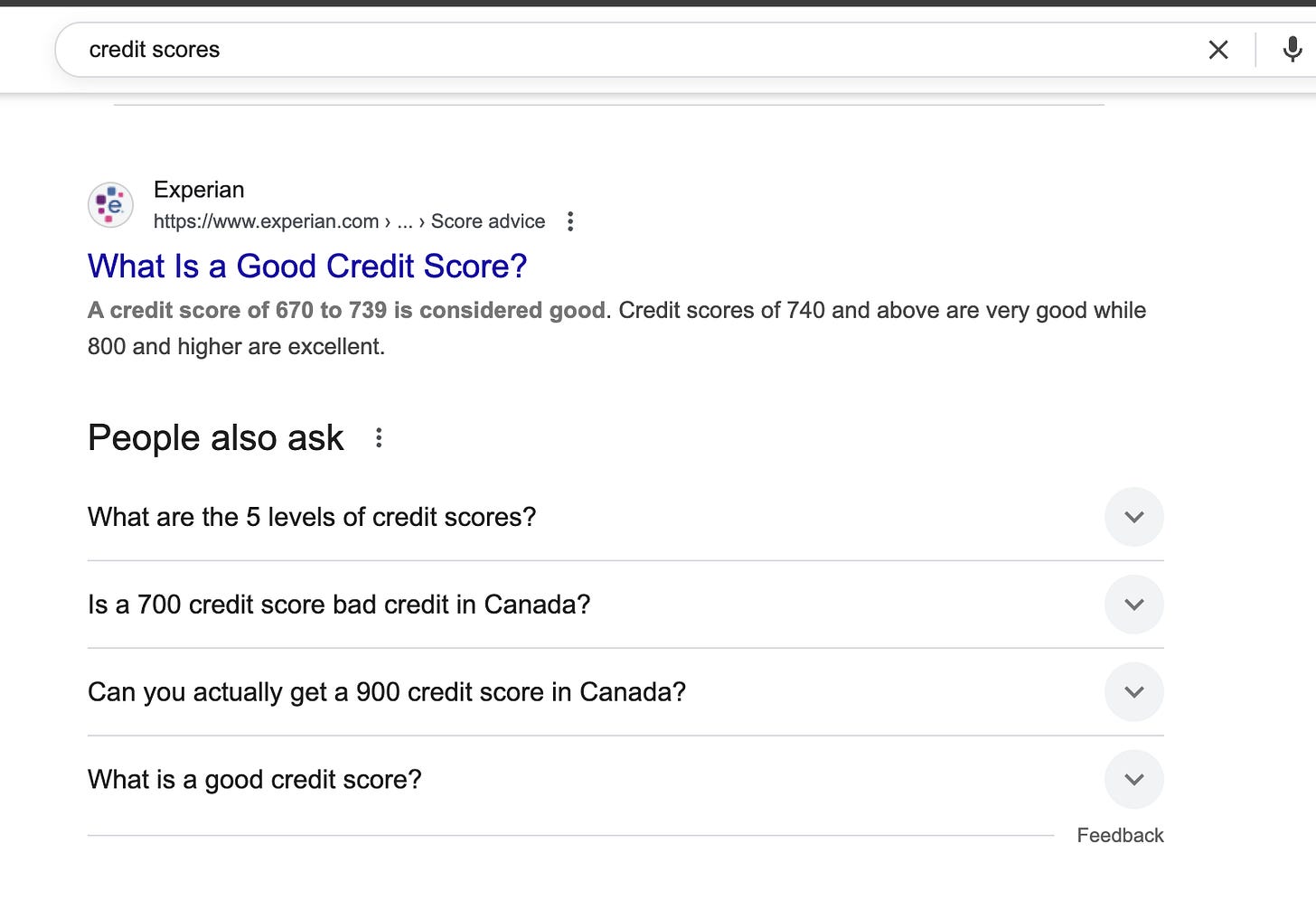What query fan-out means for the future of search
We explain how the query fan-out technique works, how it collapses the reader's journey and strategies publishers can consider.
Get the totes out of Jessie’s house!
Show your support for WTF is SEO? in the wild. Get one of our limited edition branded totes.
Hello, and welcome back. Jessie here, back from a weekend spent exploring Toronto’s ravines, playing softball and making progress on my massive crochet blanket. We’re about 100 hours into the blanket and … it’s about the size of a large bath mat. Onward!
This week: What to know about “query fan-out,” the technique Google uses for AI Mode’s responses. We explain how it works, how it collapses the reader's traditional journey and strategies publishers can consider.
Missed our Top Stories panel with Trisolute News Dashboard? Watch the recording here.
Join our community of more than 1,300 news SEOs on Slack to chat any time.
Let’s get it.

In this issue:
What is query fan-out technique?
Why does it matter?
How publishers should think about it
THE 101
What is the query fan-out technique?
When Google announced the rollout of AI Mode, it noted that the new conversational search interface would be powered by something called the “query fan-out” technique (QFOT). This technique — a complex operation that explodes a user’s single prompt into many related subqueries — marks a major shift in how Search works.
Like it or not, AI Mode represents the future of Google Search. Sundar Pichai, CEO of Google, said AI Mode will live in a separate tab for now, but said successful features will be migrated into AI Overviews and the main search results. AI Mode is currently limited to the U.S., but once Google finds a way to monetize it, it could become the default search experience globally.
Why it matters: Query fan-out collapses the reader's traditional journey on search into a single response, limiting the need for multiple pieces of content (and multiple publishers) to fulfill intent.
In classic search, a single query would be answered by a page of results (links from across the web). A reader might conduct several searches — and consult other Google products like Maps or YouTube — around an entity (example here: credit scores).
That journey might include different searches of:
What is a credit score
Credit score components
What is a good credit score rate
Who uses credit reports
Ways to improve my credit score
Each query returned a list of ranked results that included features such as Things to Know or People Also Ask. But, those would link out to separate sites.
Now, with the query fan-out technique, Google uses its Gemini 2.0 AI model to take an initial query and explode it into a web of semantically related sub-questions.
🔥 Hot tip: The AlsoAsked tool provides an excellent visualization of how entity (“credit score”) gets exploded into semantically related long-tail queries.
It fans out across the web, processing related searches, user intents, information from other platforms and products such as YouTube or Google Maps. Once all of the information is ingested, it returns a succinct, contextual and conversational result. Users can then ask nuanced follow-up questions to tighten or broaden the scope of the answer.

Although Google simultaneously explores many sources, it only surfaces the most relevant snippet, image or data table from each webpage — sometimes showing as little as a single line.
Where classic Search relied on page-level indexing (i.e., searching “who uses credit reports” and get a ranked list of URLs where that question is answered), now we have passage-level retrieval (i.e., Google lifts snippets from many URLs for the answer).

This is a rapid evolution from traditional search. Google started with strings to things in 2012 with the introduction of Knowledge Graph. Now, with query fan-out, we have things — on steroids.
THE 201
What QFOT means for people and publishers creating content
Query fan-out technique signals is a fundamental shift in the search experience.
With query fan-out, it’s possible to collapse the reader journey into a single comprehensive response — a major threat to publisher traffic. As Barry Adams wrote, if AI Mode becomes the default experience, publishers should “expect to see a collapse of clicks from search results.”
In a classic search experience, each query created multiple opportunities for Google to serve ads, but also for publishers to rank and grow their audience, earn ad revenue and convert subscribers.
But now, while those searches are still being completed, the answer is provided in just one AI-powered response. There is no need to do multiple searches with multiple sources (although readers can ask follow-up questions based on the response).
As Kevin Indig explained, AI-powered conversational search is not about “matching a single query to a single result.” It’s dozens of related searches, intents and content types, summarized into an answer and presented to the user in a conversational, understandable way.
Google also uses session memory, which considers earlier searches conducted by the user to shape new answers.
What do SEOs need to know about QFOT?
Google’s guidance for content in AI experiences is very similar to their overall guidance: focus on unique, valuable content that is crawlable and uses structured data to make it accessible in a machine-readable way.
Query-fan out technique reinforces the importance of focusing on high-quality content that follows on-page best practices, displays strong E.E.A.T and topic authority, internal links that connect related stories and pages together, as well as a solid off-site profile.
Additional strategies include:
Levelling up your keyword research to capture more reader intents and needs. Where we once might’ve had narrow content (“What time is the Super Bowl”), our keyword research should be broader and more robust. What are all the branches/angles of coverage this piece should cover? What else might the reader implicitly be interested in, such as betting lines, the starting quarterback or recipes for game day that fit within a specific diet? Tools like alsoasked.com are great for this.
Consider user interviews or focus groups to get to know your readers better. Ask them how they value your journalism, either through feedback forms or one-on-one interviews.
Semantic subheadings help readers and Google better understand the content of the page. Questions like, “is a 650 credit score bad?” provide direct answers, give structure to the page and help readers easily navigate the content. These subheadings — which can rank in SERP features like People Also Ask and be picked up in AI Mode responses — break up walls of text and provide simpler responses to reader intent.
Don't bury the lede. Instead, lead with value by providing concise, clear answers. Kevin suggests formatting content into 40-60 word blocks that answer one part of a question. Lead with the most important information (aka the lede), then provide detail.
A really strong off-site profile that can be considered by the QFOT and pulled into an AI Mode answer. An off-site audit — looking at your overall brand visibility, social mentions, etc. — across the web can reveal how well your publication is known. This same audit can be done for authors.
The threat of a Google Zero future —where search traffic drops to little or nothing — is very real. This marks a rapid evolution of search and an acceleration of Google's effort to keep users on its platform.
With traffic at risk of a steep decline, use this moment to further affirm what makes your publication uniquely valuable.
What content can only your site and its authors create?
What journalism reflects your brand’s voice, values and expertise?
What do your readers always come back to your publication for?
These are key questions to inform your audience strategy with QFOT in mind.
Direct relationships with readers on-site and via less algorithmically susceptible products such as newsletters, podcasts and live events has never been more essential.
QFOT demands we think more comprehensively about what readers want and need to know. Answering the full range of possible questions is essential to succeeding in an AI-powered search — and leads to better content.
The bottom line: The query fan-out technique powers AI Mode. While there are many uncertainties around the future of it, this shift in how Google’s search works is an opportunity to reconsider how we satisfy reader needs. Focus on understanding your readers and owning your audience.
#SPONSORED - The Classifieds
Get your company in front of more than 13,000 writers, editors and digital marketers working in news and publishing. Sponsor the WTF is SEO? Newsletter!
Indiegraf: Catch Dan Oshinsky on July 22 for a free webinar on tactics to turn newsletter readers into paying supporters. Sign up here.
RECOMMENDED READING
Google news and updates
🤖 Google: The June 2025 core update began rolling out on June 30.
🤖 Google: The company announced a new version of Search Console Insights.
🤖 Barry Schwartz: Fan out queries are not in Google Search Console.
Even more recommended reading
🕷️ David Gossage: How to interpret the content clustering visualisation in Screaming Frog.
📈 Sarah Perez: ChatGPT referrals to news sites are growing, but not enough to offset search declines.
🔑 Kevin Indig & Amanda Johnson: Keywords are dead, but the keyword universe isn’t.
💑 Sanja Markovic: Blending SEO and UX to build content for real people.
🗺️ Local Falcon: How to rank in AI Overviews for local search
💰 Cloudflare: Cloudflare is introducing pay-per-crawl for AI crawlers.
What did you think of this week's newsletter?
(Click to leave feedback.)
Catch up: Last week’s newsletter
Have something you’d like us to discuss? Send us a note on LinkedIn (Jessie or Shelby) or to our email: seoforjournalism@gmail.com.
Written by Jessie Willms and Shelby Blackley










Thanks for this writeup. QFOT honestly sounds like the eventual total demise of publishing for publishing's sake...
It feels like the winners in the future of this type of search are going to be:
1. Ecommerce: Traffic will be sacrificed, but if that remaining traffic becomes super valuable because the user intent has been filtered through interaction with AI, the traffic dip will matter less. As long as the product is quality, of course.
2a. Entertainment: You mention the importance of "direct relationships". It seems like brands/people who have multiple touchpoints for their audience (podcast AND YouTube AND Twitter AND...) while also being entertaining and/or informative in some unique way (a movie critic who has a great/dark sense of humor) is going to be highly valuable in the AI age.
2b. "News"... but with bias: Similar to Entertainment... more current events type topics (sports, politics, etc), having a source that can interpret stories may continue to be valuable. But again, the direct relationship and multiple touchpoints is going to be essential for those seeking to be found initially.
Basically, it feels like the winners are gonna be the things that AI can't fake... yet. Mainly products and personality.
Room is running out for businesses/brands/people that make a living off of just answering questions and providing "how to" type information.